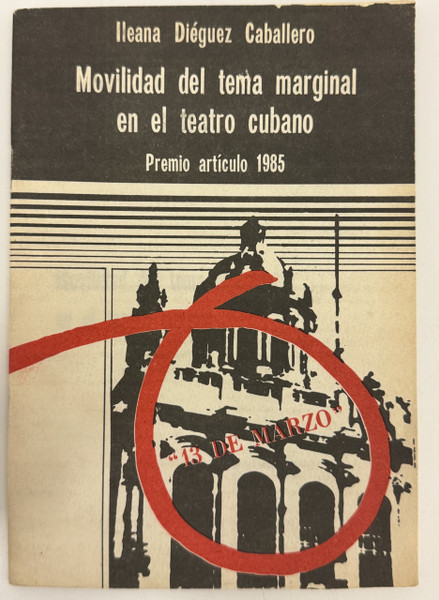- Travel
-
Exhibits
- La Portada Cubana
- Immortal Cuba: Artists Take on Their Heroes
- Seattle Poster Exhibit
- Sandra Dooley & Alejandrina Cué
- The Art of Wayacón
- Cuban Folk Art
- Cuba In Black And White
- 25 Years of Cuban Art Space
- Summer Folk Art Expo
- ¡SPRING AWAKENING FROM CUBA!
- Celebrating The Art Of Cuban Women
- Celebrating Paper, Affordable Art from Cuba
- Art of the Revolution
- Outsider Art
- Lost and Found
- En la lucha: Celebrating Cuban Women and Their Art
- Cuban Art Stash
- 100 Fires: 5 Cienfuegos Artists' Work on Paper
- Waya + Monte! Magic Realism in Cienfuegos
- Viva Cuba Viva! Poster Show
- Cultivando Sueños
- Black Lives Matter in Cuba Jan 9-March 27
- Leandro Soto: Crónicas visuales
- Cuban Canvas
-
Archive
- Global Reflection 2018: Spirit and Community
- Exhibit in the cloud: Contemporary Works on Paper
- MADE IN CUBA! MINNEAPOLIS EXHIBIT
- Cuban Posters and Photography from CCS collection
- AUTUMN SALE! Sept/Oct 2017
- SPRING ARTS AND CRAFT SALE
- Vuelo Directo/Non Stop: Alberto & Alejandro Lescay
- The Many Faces of Fidel
- Somos
- Made in Cuba!
- The US empire in Cuban graphics
- Made in Cuba/Seattle exhibit
- Entre Nos
- Looking Back
- Cuban Art Space
- Membership/Donate
- About Us
- Cuba News
-
Víctor Piñeiro's cover design for "Movilidad del Tema Marginal en el Teatro Cubano" creates a powerful visual metaphor for the book's examination of marginalized themes in Cuban theater. The composition features a high-contrast black and white photograph of what appears to be a classical building (likely Havana's iconic Capitol building), overlaid with a bold red circle and horizontal black stripes that evoke both censorship and framing devices. The red circle—reminiscent of prohibition symbols—ironically highlights rather than obscures the date "13 DE MARZO" visible on the building, creating a dialogue between visibility and erasure, center and margin. The modernist geometric elements contrasting with the documentary photograph suggest the analytical lens through which Diéguez Caballero examines theatrical representation of marginality.
Ileana Diéguez Caballero (born Las Tunas, 1961) graduated from the Instituto Superior de Arte (ISA) in 1983 with a degree in theater studies. This book, which won the 1984 essay prize in the prestigious Concurso 13 de Marzo competition, represents important early scholarship on marginalized subjects in Cuban theater. The jury—composed of Basilia Papastamatiu, Pedro Rioseco, and Fernando Rodríguez Sosa—recognized the work's rigorous academic approach and critical engagement with contemporary theatrical discourse. Diéguez Caballero has contributed to numerous Cuban publications including Conjunto, Bohemia, Cine cubano, Tablas, Caimán Barbudo, and the newspaper Guerrillero de Pinar del Río.
The book analyzes how Cuban theater represents marginal themes and populations, examining works like Carlos Felipe's cultura de resistencia, the social tragedy of María Antonia, and pieces by José R. Brene and Abraham Rodríguez that explore self-marginalization and popular culture revalorization. Published by the Departamento de Actividades Culturales of the Universidad de La Habana in 1985, this scholarly work emerged during a crucial period of Cuban theatrical experimentation when questions of representation, marginality, and cultural identity were being actively debated. Piñeiro's cover design—with its interplay of documentation and abstraction, visibility and censorship—perfectly encapsulates the book's exploration of how theater makes visible those subjects and themes that exist at society's margins.
-
-
Discover More at the Center for Cuban Studies







